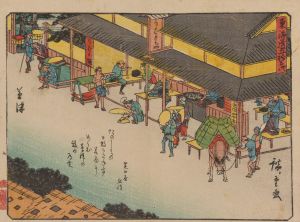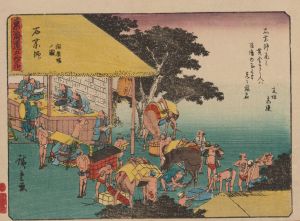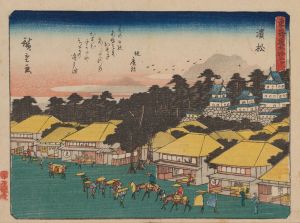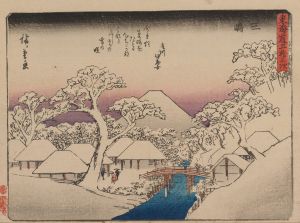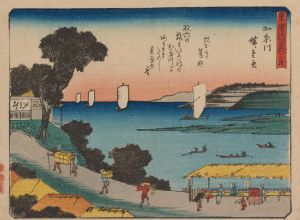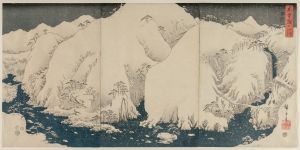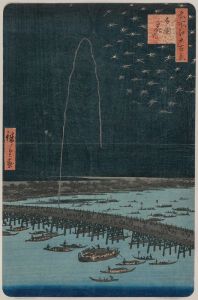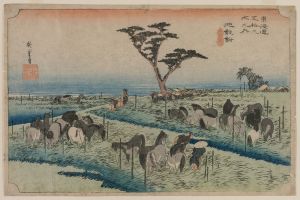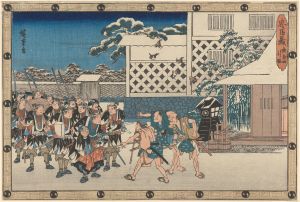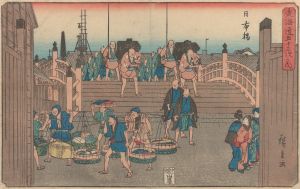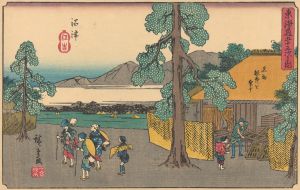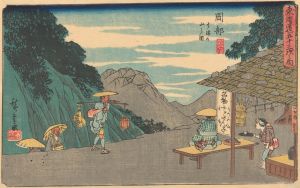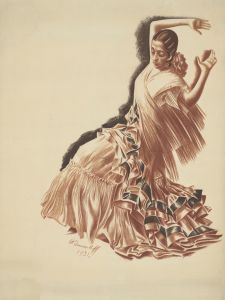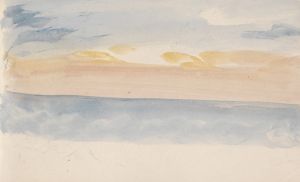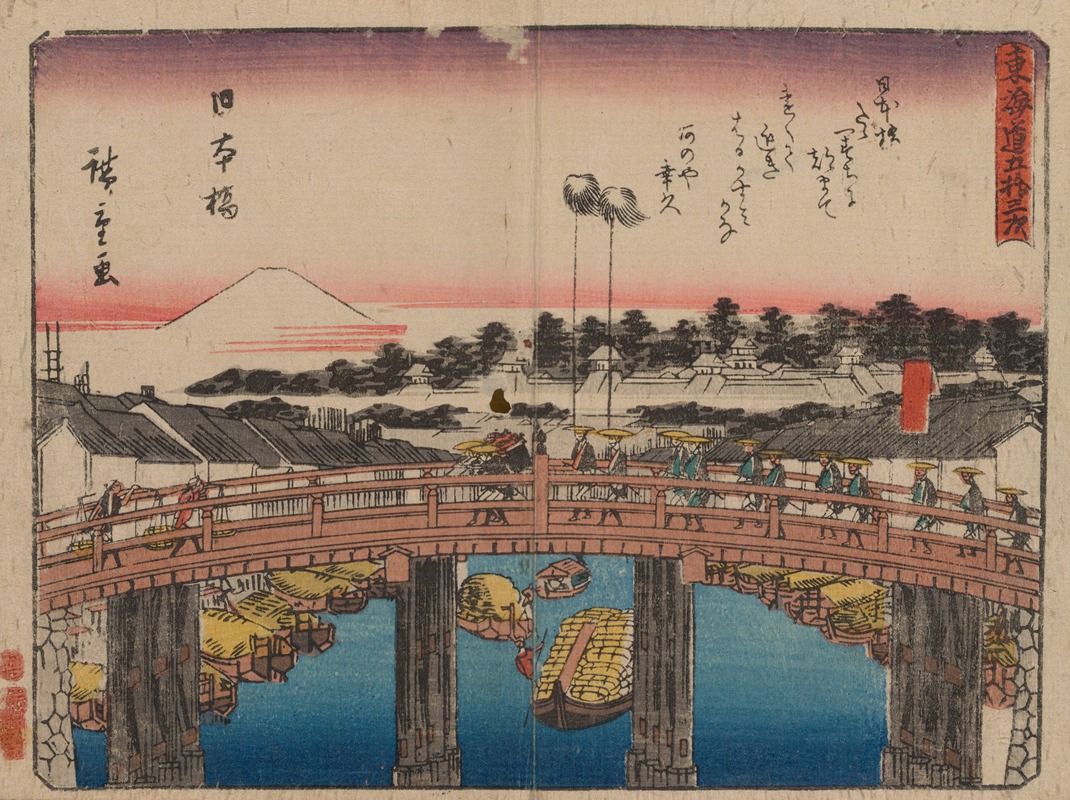
Tokaido gojusantsugi, Pl.01
A hand-painted replica of Andō Hiroshige’s masterpiece Tokaido gojusantsugi, Pl.01, meticulously crafted by professional artists to capture the true essence of the original. Each piece is created with museum-quality canvas and rare mineral pigments, carefully painted by experienced artists with delicate brushstrokes and rich, layered colors to perfectly recreate the texture of the original artwork. Unlike machine-printed reproductions, this hand-painted version brings the painting to life, infused with the artist’s emotions and skill in every stroke. Whether for personal collection or home decoration, it instantly elevates the artistic atmosphere of any space.
Andō Hiroshige, a renowned Japanese ukiyo-e artist of the Edo period, is celebrated for his landscape prints and his series "The Fifty-three Stations of the Tōkaidō" (Tōkaidō Gojūsan-tsugi). The series is one of Hiroshige's most famous works and consists of 55 prints, including the starting point at Nihonbashi in Edo (modern-day Tokyo) and the ending point at the Sanjō Bridge in Kyoto, along with the 53 stations in between. These prints depict various scenes along the Tōkaidō road, which was the most important of the Five Routes of the Edo period, connecting Edo with Kyoto.
The first print in this series, "Tokaido gojusantsugi, Pl.01," is titled "Nihonbashi: Morning Scene" (Nihonbashi: Asa no kei). This print captures the bustling activity of the Nihonbashi bridge, which was the starting point of the Tōkaidō road. Nihonbashi, meaning "Japan Bridge," was a central hub in Edo, serving as a key commercial and transportation center. The bridge itself was a symbol of the city's prosperity and connectivity.
In Hiroshige's depiction, the scene is set in the early morning, as indicated by the title. The composition is lively, with a variety of figures engaged in different activities. Merchants and travelers are seen crossing the bridge, some carrying goods, while others are on horseback or in palanquins. The print effectively conveys the sense of movement and the daily hustle and bustle of Edo life. The background features the distant silhouette of Mount Fuji, a recurring motif in Hiroshige's work, symbolizing both beauty and stability.
Hiroshige's use of color and perspective in this print is notable. The soft, muted colors create a serene atmosphere, while the linear perspective draws the viewer's eye along the bridge and into the distance. This technique was influenced by Western art, which was becoming more known in Japan during Hiroshige's time. The attention to detail in the figures and the architectural elements of the bridge showcases Hiroshige's skill in capturing the essence of a scene.
The "Fifty-three Stations of the Tōkaidō" series was produced following Hiroshige's own journey along the Tōkaidō road in 1832, when he was part of an official delegation. This journey provided him with firsthand experience of the landscapes and scenes he would later depict in his prints. The series was published by the Hoeido publishing house and became immensely popular, establishing Hiroshige's reputation as a master of landscape prints.
Hiroshige's work, including "Nihonbashi: Morning Scene," played a significant role in popularizing the ukiyo-e genre and influencing Western artists, particularly the Impressionists, who admired his use of color and composition. Today, Hiroshige's prints are celebrated for their beauty, historical significance, and their ability to capture the spirit of Edo-period Japan.





